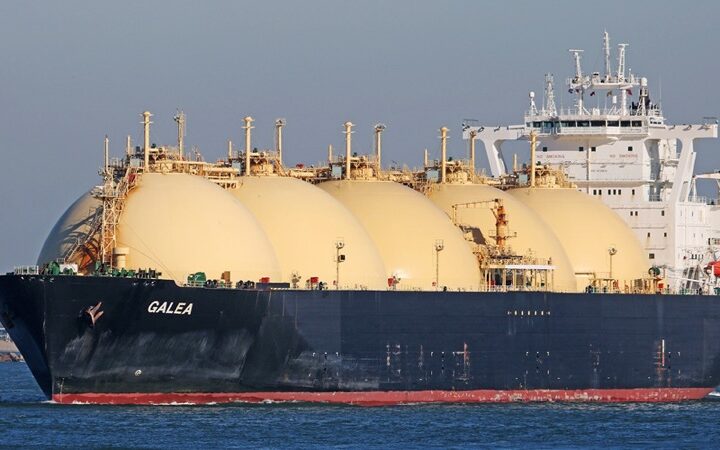.
The Risk Watch Column
By Dr Alan Waring
 In August this year, two major explosions occurred at different chemical facilities in China. What do these tragic events tell us about how such man-made disasters occur and the state of risk reduction and control in major hazard industries anywhere in the world? Why do well known and documented lessons in prevention from decades of previous disasters around the world continue to fail to be implemented? What defects in major hazard risk control in the China context are also evident in Cyprus?
In August this year, two major explosions occurred at different chemical facilities in China. What do these tragic events tell us about how such man-made disasters occur and the state of risk reduction and control in major hazard industries anywhere in the world? Why do well known and documented lessons in prevention from decades of previous disasters around the world continue to fail to be implemented? What defects in major hazard risk control in the China context are also evident in Cyprus?
Major Hazards Safety in China
 At least 170 people were killed and nearly 800 injured by two explosions seconds apart at the Tianjin Dongjiang Port Rui Hai International Logistics Company’s chemicals warehouse in the port city of Tianjin some 150km from Beijing on August 13. Widespread property damage occurred over a 1km radius and thousands of people were evacuated. One thousand firefighters and more than 140 fire tenders were deployed to tackle the subsequent blaze which went on for nearly 24 hours. A team of over 200 chemical hazard specialists was despatched by the government from Beijing to assist in minimizing any consequent safety, health and environmental risks.
At least 170 people were killed and nearly 800 injured by two explosions seconds apart at the Tianjin Dongjiang Port Rui Hai International Logistics Company’s chemicals warehouse in the port city of Tianjin some 150km from Beijing on August 13. Widespread property damage occurred over a 1km radius and thousands of people were evacuated. One thousand firefighters and more than 140 fire tenders were deployed to tackle the subsequent blaze which went on for nearly 24 hours. A team of over 200 chemical hazard specialists was despatched by the government from Beijing to assist in minimizing any consequent safety, health and environmental risks.
Another explosion and fire occurred on August 22 at the Runxing chemical factory in Zibo City, Shandong Province, 300km south of Beijing. In this blast, one person was killed and 9 injured. Apparently, the explosion and fire started at a separator unit in the production process. Blast damage and effects were experienced up to 2km away.
Regrettably, man-made safety disasters are all too frequent in China. One of the most notable for its scale and ramifications was the explosion and fire at the PetroChina petrochemical plant in Jilin City in 2005. Six people were killed at the site and 70 more were injured. Some 10,000 people in the vicinity were evacuated. The initial disaster then escalated into one of the world’s worst ever environmental disasters as chemicals from the site poured out into water courses. Large quantities of toxic substances such as benzene and nitrobenzene were washed into the Songhua River and were carried across the whole of Jilin Province and then Heilongjiang Province heading for Harbin and the Amur River. An 80km long pollution slick carried across the border into Russia reaching Khabarovsk and eventually the Pacific Ocean.
At the time, I was advising representatives of the State Administration for Work Safety, and academics at Tsinghua University in Beijing, who were also advisers on risk management to the Council of Ministers. It was apparent that China was still stuck in a dysfunctional mode of thinking on safety that had been prevalent in the West before the flurry of major hazard disasters of the 1970s and 1980s and the advent in the EU and generally of a pro-active regulatory and preventative system based on objective risk assessment. Common negative themes in China’s industries included:
• Major hazard sites routinely located in urban areas;
• Residential impact and public safety routinely side-lined or ignored;
• Lack of effective regulatory control mechanisms;
• Absence of a ’safety justification’ or ‘safety case’ system;
• Over-reliance on routine technical inspection and periodic certification of hardware at the expense of safety management systems, formalized major hazard risk evaluation, safety cases and safety culture;
• Repeated failure to learn lessons from previous disasters and to implement lessons that had been learned.
These themes were very reminiscent of the ‘old approach’ to major hazards in the West that the ‘new approach’ has largely replaced e.g. the Control of Major Hazards EU Directives (Seveso I, II and III) and the EU Directive on Safety of Offshore Oil and Gas Operations.
Other Factors
 Nevertheless, whereas the risk-based approach developed in the West since the mid-1980s has introduced a large degree of self-regulated safety discipline and applied knowledge in the major hazard industries, and much of the rather cavalier negative safety attitudes has gone, the fact remains that disasters keep occurring. Repeatedly, lessons from previous disasters are either not learned at all or, if they are, those lessons are not implemented.
Nevertheless, whereas the risk-based approach developed in the West since the mid-1980s has introduced a large degree of self-regulated safety discipline and applied knowledge in the major hazard industries, and much of the rather cavalier negative safety attitudes has gone, the fact remains that disasters keep occurring. Repeatedly, lessons from previous disasters are either not learned at all or, if they are, those lessons are not implemented.
There is no reason to suppose that the situation in Cyprus is any different. For example, to what extent have the lessons from the 2011 Mari-Vassilikos explosion and the recommendations of the Polyviou Report been implemented? Now that the new Vassilikos Energy Complex is operational, what independent expert assurance do we have that major hazard risk control there is adequate? Has public consultation been real or perfunctory? Are the Cyprus regulators and enforcing authorities up to scratch?
As I asked in a recent article in Safety Science 79 (2015), 254-267, why does there remain such a large gap between the ideal and reality when it comes to major hazard accident prevention? Why do boards and individual directors and executives so frequently appear to defy rational common-sense requirements (and indeed statutory requirements and professional good practice, including lessons learned) for safety risk management intended ultimately (as a corporate governance objective) to protect the interests of shareholders and other stakeholders such as employees and the public?
Official disaster inquiry and investigation reports continue to flow thick and fast (e.g. Buncefield gasoline storage fire and explosion 2005, BP Texas City refinery fire and explosion 2005, BP Deepwater Horizon offshore installation 2010, Mari-Vassilikos disaster 2011, Fukushima Daiichi nuclear reactor meltdown 2011). Common critical themes that emerge include:
• Managerial over-reliance on routine technical inspection and plant certification,
• Weak and defective safety management systems,
• Weak safety culture,
• Failures of hindsight, foresight and learning,
• Ignorance and bounded rationality,
• Groupthink, authority and conformity,
• Faulty risk cognition and risk attitudes,
• Conflicting motivations and expectancy,
• Faulty risk decision-making,
• Socially constructed emergence.
The Attitude of Bosses
However, although all the above factors are well known in safety science, very few facts are known about what determines the risk decisions that directors and senior executives in major hazard organizations actually make about major hazard risks. Most of what is written about this matter is actually based on assumption, rationalisation, guesswork and speculation and not on evidence obtained by any scientific study.
Empirical evidence based on primary data obtained directly by in-depth interviews with directors and senior executives is very rare because access to them is denied. Some possible reasons for such access denial and reluctance to be transparent include:
• Avoiding scrutiny that may produce negative or embarrassing findings;
• Sensitivity about legal liabilities and access to confidential data ;
• Being questioned on risk decisions may affront their dignity and self-image;
• Lack of empathy for and understanding of academic research value.
One has only to watch, for example, the video evidence of the US House of Representatives House Committee chairman Henry Waxman’s formal public interrogation of BP America’s CEO Tony Hayward on 17 June 2010, following the Deepwater Horizon disaster. This not only provided a graphic example of the judicial risks that directors may personally encounter but also demonstrated a determination by Mr Hayward not to answer the chairman’s penetrating questions!
Conclusion
Currently we are stuck with not knowing with any certainty whether the top bunch in major hazard operators make seemingly bad or crass risk decisions because they have a gambling mentality and a ‘what can we get away with?’ culture; or because they make an intellectual appraisal in which their prioritized perceptions of corporate risks are weighed against a desire to put ‘safety first’ e.g. if safety is perceived (accurately or not) as a drain on profits; or because they are driven by imperceptible social processes towards unwise decisions or actions; or because of some other as yet unidentified reason.
PR statements and aspirational safety policy statements by company managements simply cannot be taken at face value, as many disaster inquiry reports make clear e.g. Buncefield, BP Grangemouth. To break out of the current impasse, whereby vast amounts of safety knowledge and lessons from past disasters are not being sufficiently applied and preventable disasters keep occurring, we need to get some answers. Research based at the European University Cyprus is seeking to address this.
Dr Alan Waring is an international risk management consultant with extensive experience in Europe, Asia and the Middle East with industrial, commercial and governmental clients. He is Visiting Professor at the School of Science, European University Cyprus. His latest book Corporate Risk and Governance is at www.gowerpublishing.com/isbn/9781409448365 . Contact [email protected] .
©2015 Alan Waring







